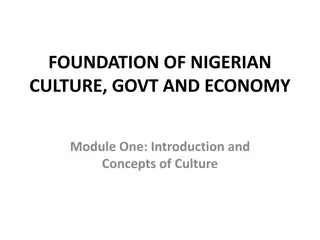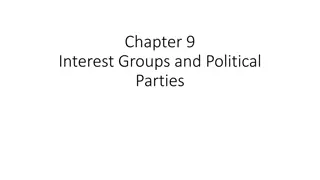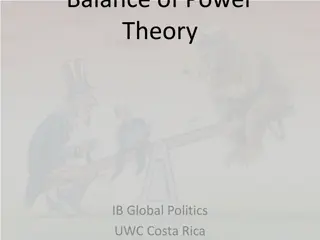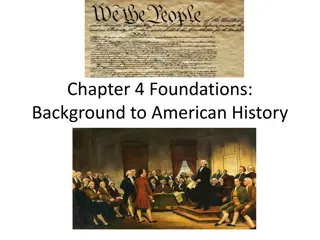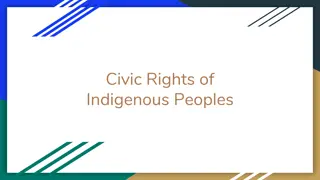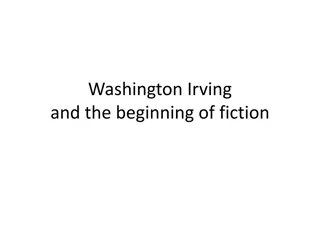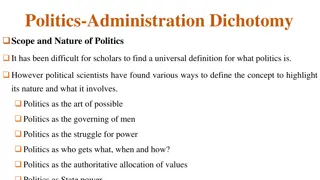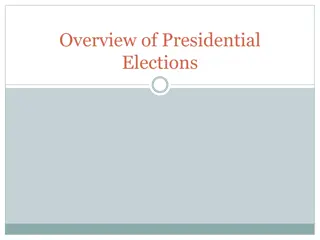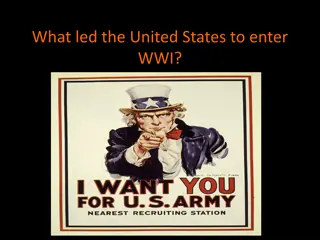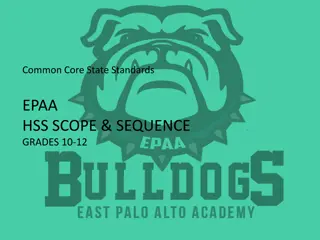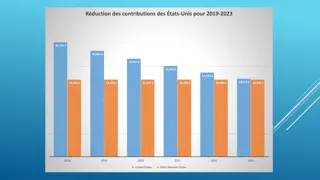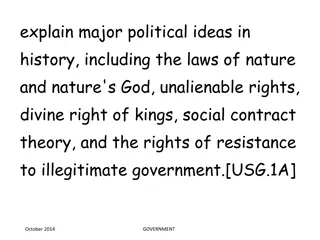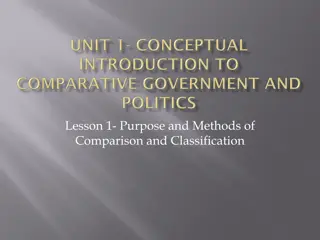
Government and Politics in the United States
Explore the key branches of the American government - legislative, executive, and judicial - their responsibilities, and the reasons behind Americans' attitudes towards a strong government. Learn about Congress, the President, the Cabinet, and the Supreme Court in this insightful study of American governance.
Download Presentation

Please find below an Image/Link to download the presentation.
The content on the website is provided AS IS for your information and personal use only. It may not be sold, licensed, or shared on other websites without obtaining consent from the author. If you encounter any issues during the download, it is possible that the publisher has removed the file from their server.
You are allowed to download the files provided on this website for personal or commercial use, subject to the condition that they are used lawfully. All files are the property of their respective owners.
The content on the website is provided AS IS for your information and personal use only. It may not be sold, licensed, or shared on other websites without obtaining consent from the author.
E N D
Presentation Transcript
American Culture 2 Lecturer: Lam Phan, M.A Email: lamphan83@gmail.com Phone: 0983 685 405
Chapter 7: Government and Politics in the United States
Key term Branch(es) Legislative Executive Judicial Congress Senate Senator House of Representatives President Vice president Cabinet Governor Mayor Bill Bill of Rights
Group Work Government and Politics in the US Why don t Americans want to have a strong government? Because they are afraid it will put limits on the personal freedom.
The organization of the American Government The U.S. Federal Government is divided into three branches. What are the three major branches? legislative, executive, judicial branches What is each branch s major responsibility? Legislative branch: writes laws Executive branch: carries out laws Judicial branch: interprets laws Known as the separation of powers
The 3 Branches The Legislative Branch Commonly known as Congress Congress has two houses The Senate = 100 Senators 50 states x 2 senators from each state = 100 The House of Representatives = 435 Representatives The number of representatives each state has depends on how many people live in that state Basic responsibility: to write laws, ratify treaties
The 3 Branches The Executive Branch Includes the president, vice president, and the Cabinet President: Sign or veto bills The Cabinet: Administer government programs Basic responsibility: to carry out law
The 3 Branches The Judicial Branch Includes the Supreme Court and lower national courts Decides if laws passed by Congress and signed by the president are constitutional Basic responsibility: to interpret the law and determine whether the law is constitutional
The Separation of Powers Why? To prevent any part of the government from becoming too powerful To protect the rights of the citizens
Checks and Balances Through system of checks and balances The Constitution of the United States tries to give each branch enough power to balance the others Each branch has its own responsibility Each branch has power to limit the power of the other branches
Bill of Rights Protect/Guarantee specific person rights and freedom from government interference
The Parties There are TWO important political parties - Democrats (progressive) - Republicans (conservative)
Election Members of the House of Representatives are elected for two- year terms while senators serve six-year terms Presidential elections are held every four years on the first Tuesday in November Requirements to be president: Natural-born citizen At least 35 years old Resident of U.S for 14 years Hasn t served 2 consecutive terms Watch video on Canvas
The ideal of free individual Before the Civil War (1861-1865), the American ideal of the free individual was the frontier settler and the small farmer. From the end of Civil War until the Great Depression, the American ideal of the free individual was the successful businessperson. => Government remained small and inactive in order to create the conditions most favorable to the development of the free individual
Welfare and Entitlements Welfare: Programs such as unemployment benefits, food stamps, and Medicaid (health care for the poor) Entitlements: Social Security and Medicare (health care for the retired) Now, the term welfare is almost never used, all these government benefits are referred to as entitlements
Special Interest groups the group of people who share a common interest and work together to more effectively influence the actions of government These group are often called lobbying groups or pressure groups Example: The National Rifle Association (NRA), American Association of Retired Persons (AARP)
Blue States Vs Red States Blue States: giving electoral votes to Democratic candidate/Democrats Red States: giving electoral votes to Republican candidate/Republicans
Branch People Responsibilities Executive (1)__________________ President Vice President Carry out laws (3)________________ (2)__________________ Cabinet Congress Legislative (4)_________________ (5)________________and Senate (9)__________________ Write laws House of (6)___________________ Representatives Senators 435 100__(7)____________ __(8)________ Representatives Judicial (10)_________________ (11)____________ and lower national Courts Supreme Court Interpret laws (12)__________________ _
Homework EXERCISE 3 CANVAS



